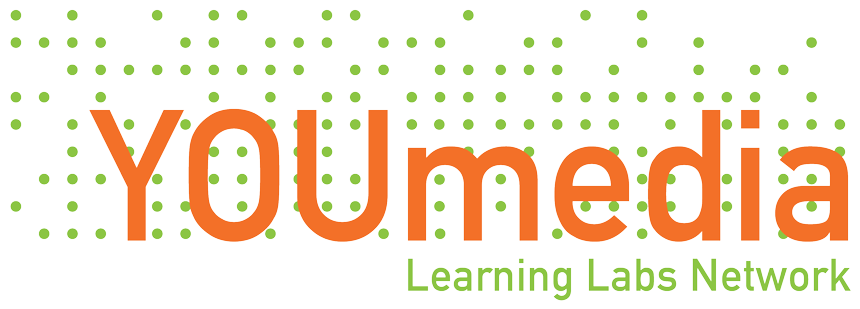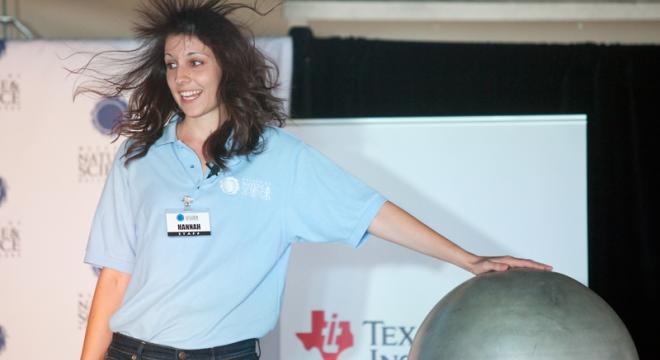A lot has happened since President Obama declared a national impetus to improve STEM learning, which focuses on science, technology, engineering, and math, in July of 2012. Since plans for a “master teacher corps” were put into motion, another movement began—one that is about more than just proverbial “hot air,” too.
STEAM education, a revamped version of STEM, adds an “A” to the traditional acronym to include arts and design. It has been widely discussed, amongst artists and scientists alike, and many organizations have begun to adopt the new terminology, adding the arts into their programming. Sites like STEAM—not STEM and StemtoSteam, operated by the Rhode Island School of Design, have made it their mission to raise awareness of the new acronym and its movement.
“In this climate of economic uncertainty, America is once again turning to innovation as the way to ensure a prosperous future. Yet innovation remains tightly coupled with Science, Technology, Engineering and Math – the STEM subjects,” explains the site’s homepage. “Art + Design are poised to transform our economy in the 21st century just as science and technology did in the last century. We need to add Art + Design to the equation—to transform STEM into STEAM.”
STEAM learning is becoming a primary concern of educators and youth programmers, especially at the Perot Museum of Nature and Science. Hannah Moots, an educator at the museum, explained how they go about including the arts into their programming, and why it’s so important.
“We think a lot about the creative process of invention. We focus on what artists and scientists have in common, and where there’s overlap in their practice,” said Moots. “In both science and art, trial and error is an important thing. It’s all about coming up with a plan, executing it, and evaluating it to decide whether or not you need to try it again.”
The Perot Museum recently increased the scope of its programming to include a focus on the arts after partnering with the Dallas Museum of Art in its construction of their upcoming Learning Lab. Moots, who has been working on the project, said, “I think the partnership has changed our programming,” referring to their increased inclusion of the arts.
Chair of Learning Initiatives and the Dallas Museum of Art League Director of Education Nicole Stutzman Forbes also weighed in on the importance of their collaboration in a recent interview for YOUmedia.org.
“We’re really interested in the crossover between art and science,” she said. “Art can be a visual manifestation of the mechanics of a difficult concept in science. Yet art can often be abstract, while science can serve as a practical jumping off point for others.”
As for the upcoming Learning Lab, Forbes described the kinds of questions she’s been asking youth to find out what they look for in a collaborative space. “We’re asking them what they’re thoughts are about how they’re creative, or what creativity is to them,” she said. “We’re asking them how arts and science merge, and how that interests them.”
This merger of arts and science is, despite any debate, extremely relevant in ensuring the national competency needed to partake in a future of innovation. And, as Moots pointed out, STEAM skills are valuable career skills for all youth to learn.
“I think STEAM education is really important because, a lot of times, the careers high school students are exposed to don’t fall neatly into just one category. There’s always going to be crossover,” she said. “Scientists, especially, need to think critically about how they’re going to present and share their research.”
So, whether youth want to work in a lab, or become a science illustrator, arts and design skills are of great value—especially when coupled with digital technology. Most importantly, STEAM programming creates new career pathways for students and exposes them to subjects they may have previously discredited.
“The way these subjects have been presented to kids has been really narrow,” said Moots. “Maybe you’re interested in electronics, maybe fashion, maybe circuitry, and STEAM encompasses all of that. It makes it accessible and approachable.”
Moots said that the museum has taken a specific interest in subjects like electronic circuitry and E-textiles, or fabrics that incorporate digital components. “Both present a great way to integrate art and science,” she said.
Teen programming specialist of the Free Library of Philadelphia, K-Fai Steele, is an active artist herself, and also weighed in on the importance of the “A” in STEAM.
“Art can help to get kids interested in intangible concepts,” she said.
Steele, like Moots, also mentioned involving the arts in video gaming. In a recent lesson, Steele used Scratch, a popular plug-n-play visual programming language developed for kids at MIT, and the MaKey MaKey, which allows youth to design the physical components of a video game, like computer keys or touchpad, using any material they choose. Steele gave them the tools to design their own video game, but also provided a lump of clay, and told youth to design their own controllers.
“I asked them, ‘If I make this game about a donkey chasing a parrot, what should my controller look like?’” said Steele. “I’m always finding ways to go one step further and bring this back to the arts,” as all youth programmers should.
By Kelsey Herron

